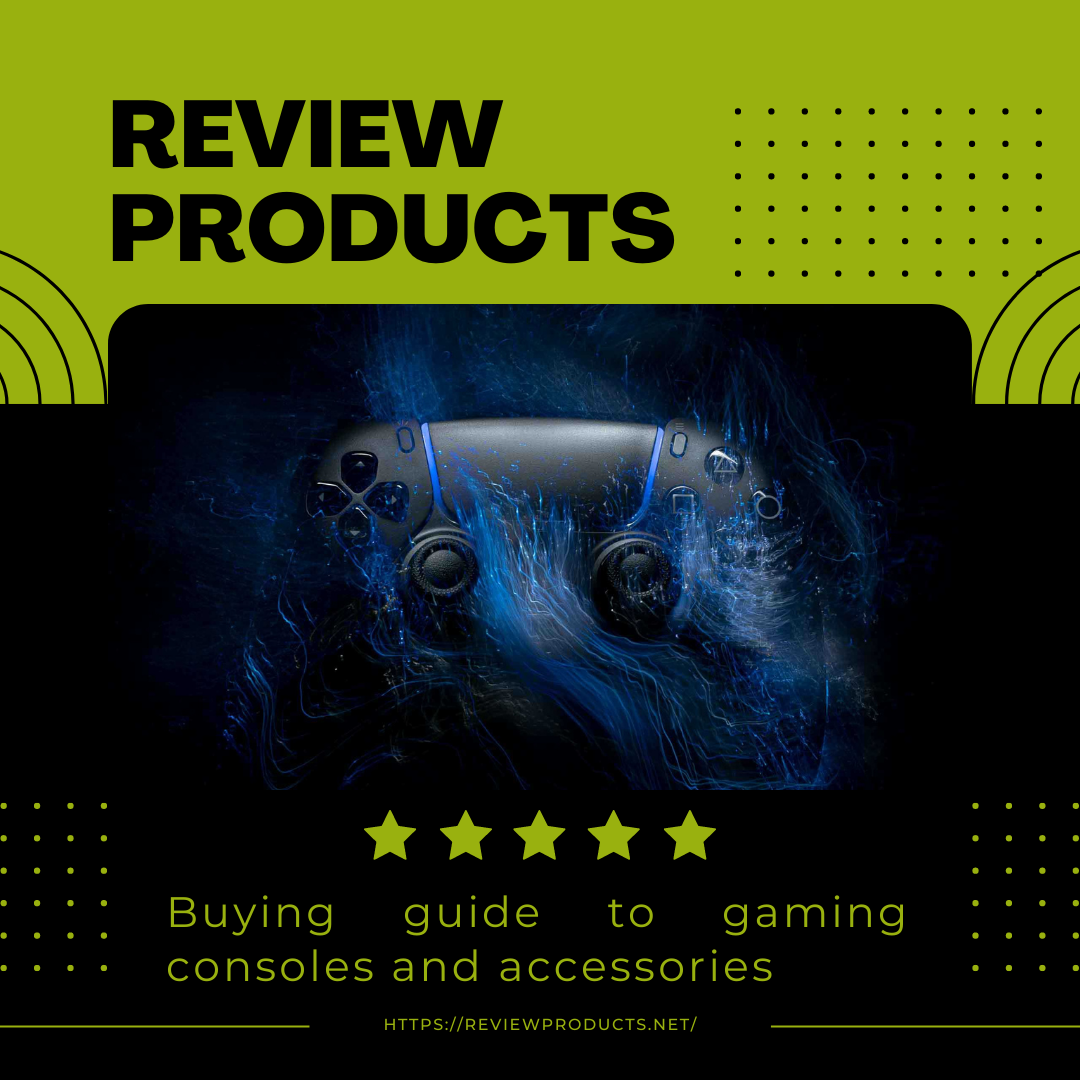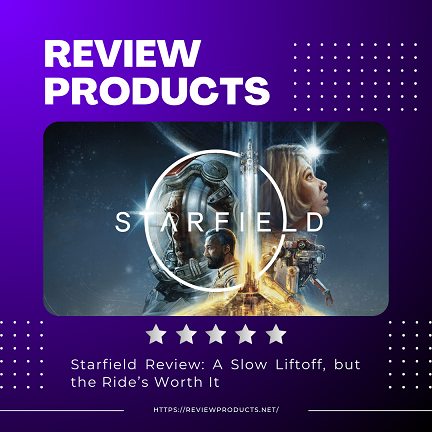Starfield Review: A Slow Liftoff, but the Ride’s Worth It
It’s no secret that Starfield, which is currently available on PC and Xbox Series S/X, is one of the most significant gaming releases of the year. As Bethesda embarks on creating their first new world in 25 years, set across the stars in a futuristic civilized corner of the Milky Way galaxy, they are taking a risk in unexplored terrain. Xbox’s publisher has the chance to recover from a lackluster 2022 slate and take control of the gaming conversation for years, given the renowned longevity of director Todd Howard’s RPGs. Starfield strives to be our generation’s most sophisticated spacefaring experience, with over a thousand planets to explore, brash factions to side with, and cosmic mysteries simmering with political intrigue. It glides gently as a result, though not without considerable turbulence.
Review of Starfield: The flaws in the main narrative
It is the year 2330. Humanity left Earth, the so-called “Blue Planet,” and settled in other star systems after it lost its atmosphere and turned into a barren, desolate wasteland. So, our journey begins in space from the humble beginnings of a nameless space miner who discovered a curious piece of glittery debris in a tunnel. After touching the shard, we enter a strange trance in which we hear and see celestial noises that speak to us spiritually before passing out. As soon as you open your eyes, Starfield introduces the well-known RPG amnesia cliché, in which players must thoroughly create characters to recall their identities. It has all the identifying characteristics of a typical Bethesda game, adhering closely to its role-playing model of adventuring, looting, and killing, albeit on a considerably larger scale that frequently feels overwhelming.
Fair warning, though:
Starfield is incredibly slow to get going, keeping you confined to a dull exposition search for the first few hours before letting you freely explore any planet you choose. I’ll grant that the game quickly becomes impossible to put down, but for many players, that first part of the game—during which you mechanically move from point A to point B or attempt to acquire accustomed to its peculiar menus—could easily make or break the experience. For me, it took the game more than 10 hours to begin, which made me wonder if I would ever end up enjoying it. And it’s not like I wouldn’t say I like passive starts either; most of my favorite movies are slow-burn dramas that devote a significant portion of their running times to setting the scene and developing the characters. Sadly, video games are completely another animal. They demand complete focus because they might easily last longer than 60 hours of gaming.
Starfield character creation Starfield character creation
Starfield offers very thorough character creation, with swappable qualities that give you the impression of being a blank slate.
Starfield’s main campaign, which has you join a motley crew of galactic explorers named the Constellation in search of unidentified artifacts like the metallic one we previously encountered, could be more exciting, which doesn’t help. We are tasked with tracking down the mystery artifacts by exploring other worlds, which sends us on all kinds of amazing adventures via dark tunnels swarming with space raiders to desolate landscapes acting as a graveyard for mechs. As you might imagine, the story follows a similar pattern. The repetitive missions that involve basic puzzle-solving, killing enemies, and floating around in potentially alien temples are wrapped around these brilliant scenes. Still, they quickly become boring and switch to fetch quests you feel pressured to complete to advance the plot.
While the plot is undoubtedly clichéd and packed with sci-fi clichés, its intriguing characters, specifically our friends, provide some enjoyment. At first, none of them are particularly likable, but taking them on trips encourages them to share their emotions and backstories. Sam Coe, the lone space cowboy, quickly won my favor because he was trying to escape his famous father’s spotlight and frequently thought back to his early years of smuggling goods across the huge void.
When he invites his daughter along for the ride, he emphasizes his overprotective side while gushing over how smart she is, showing that he is more complex than a bold peacekeeper. But you also discover a sense of entitlement and inner conflict in his parenting, where he wonders if it’s the best thing to do to raise her while subjecting himself to perilous, frequently life-threatening situations. It is kind, but I hate how his past is revealed; it’s just a constant trauma dump at random intervals with no thought to your goals.
Starfield review partners Starfield review partners.
At times, the predicament of the companions seemed unnecessarily simplistic.
The same could be said with the other travelers, albeit I couldn’t bond with them as deeply. Constellation chair Sarah Morgan’s desire to explore the stars, the easygoing explorer Barrett, and the intriguing stealth specialist Andreja all had unique charms. Still, I needed to care more about their struggle since it seemed too shallow and occasionally poorly presented. Because talks in Starfield offer a full frontal view of the other person, you can observe the shortcomings in Bethesda’s character modeling that restrict some facial expressions. Basic emotions like sadness or happiness have an uncanny valley-like quality, almost as if the NPCs are all covert androids being taught to fake grins. They all appear lifeless on the inside, which is made worse by the voice acting, which frequently sounds stiff and tempts viewers to scan the subtitles rapidly and spam-skip to the next line of speech.
Review of Starfield: engaging side missions and world-building
Following Bethesda’s history, Starfield’s genuine magic may be found in the game’s expansive side quests that appear along the way, the majority of which are inspired by news stories and current events. Although I wouldn’t say they were all equally fascinating, they all resulted in some unexpected interactions that frequently had a tragic undertone. Once you’re on foot, it’s simple to lose sight of your original objective and spend hours exploring the more populated, lovely areas of the galaxy, which are filled with strange inhabitants with a big or tiny request for you.
One such place was the appropriately named Neon, a rain-soaked cyberpunk city, a la Blade Runner, where I went around threatening vandals, snatching hallucinogenic substances based on exotic fish, and vibing at the neighborhood dance club. However, it was mostly a location to make a lot of money, which I did by moving up the corporate ladder at Ryujin Industries. This huge tech company trades in drones, spaceships, and weaponry. I quickly transitioned from getting coffee for my superiors to going on espionage operations to hack into the systems of competitor firms to sabotage them.
Starfield’s evaluation of the tasks in Neon
I had a great time exploring the valleys of Neon and collecting a ton of quests.
It’s safe to infer that by accessing the secret information and being able to negotiate my way into confined spaces, I would grow to be a crucial asset for the faction. I decided to use this persuasive strategy while creating my character. I included a special quality that causes the Adoring Fan from The Elder Scrolls IV: Oblivion to follow and compliment me whenever possible. His praise provided much-needed self-confidence for completing chores with little to no violence.
Because some people might find these stealth-based tales tedious, Starfield has a variety of factions to choose from, each of which has its own set of quests to complete and incentives to earn. You can pretty much take whatever option the game offers because you’re never forced to join a particular faction, whether it’s living out your space pirate fantasies, joining the militia, or bringing criminals to justice as a planet-hopping cowboy. The last of them, joining the Freestar Collective, was a memorable experience that thrust me into a massive conspiracy that tested my morality at every turn and solidified the notion that justice is never black or white in peacekeeping.
Certain quests are organically communicated through setting storytelling. I found a datapad from a dead foe early on in Starfield, and it took me to a mythical space vigilante’s hidden hideaway, where he kept a tough spaceship and famous armor. Later on, stealing and equipping them resulted in some amusing space encounters, with thieves mistaking me for the actual Mantis, pleading for mercy, and even giving me some credits in exchange for my silence.
Another day, I came across Juno, the NASA Jupiter space probe that had become an AI and deviated from its intended route. I discovered that it had grown sentient and had feelings of wanting to be treated like a genuine person when I was given the responsibility of updating its control board. The next thing I knew, I was emotionally debating what it meant to be a person and what made a machine. Starfield has so many fascinating side quests, many of which are treated in greater detail than the game’s unremarkable main plot. So, if you are getting diverted on your quest, I’d strongly advise embracing and pursuing them. They are time well spent!
In contrast to the spectacular holograms we’ve seen in previous sci-fi games like Mass Effect, Starfield’s overall visual has a retro vibe despite being set 300 years in the future. This visual language, which grounds technology with tactile buttons and commonplace trinkets like pens, notepads, and potted plants in what feels like a realistic and reasonable evolution, was given the name “NASA Punk” by Bethesda. Despite centuries of development, it’s a stylistic decision that exudes humanity’s presence and eccentricity.
Starfield’s food appears to be delicious.
Humming motor noises may be heard on the streets of Neon City, whereas Akila is a dusty, wild west area with a tavern in the center, and the people of New Atlantis are seen lugging briefcases about. According to the futuristic food company Chunks, consumers don’t care what they eat as long as it’s good and processed foods like fruits, cooked fowl, and even beverages into unappealing small cubes. However, you can also stockpile everyday foods like patty melts, kebabs, chicken tikka masala, sushi rolls, and other firmly grounded and endearing food.
Review of Starfield: Exploration
Starfield is massively ambitious, with over 1,000 explorable planets, and sounds too fantastic to be true. Realizing that one cannot freely park a spaceship on worlds and take off, as No Man’s Sky did seven years ago, quickly reduces that degree of scope. In Starfield, interplanetary transit is accomplished through a sequence of maps, menus, and an absurd number of loading screens, all shattering immersion. Here’s how it works: You open the galaxy’s map, choose a different star system to go to, choose a planet within it, and then grav-jump there. After that, you open the map again to choose a landing spot, and a cutscene showing your ship descending onto the surface will play. This fast travel system also distances you from the game’s universe by having everything so methodically organized that I could not feel a sense of connection on any of the random planets I visited.
Fast travel is required in Starfield to complete interplanetary transportation.
Each planet or moon may contain pre-determined sites of interest you can land at and explore on foot. Some of these points of interest may be quest-oriented, while others may be optional outposts and flora. But if one ventures off the established road, one may encounter procedurally produced locales, which are typically lifeless and devoid of personality. I won’t say that seeing a magnificent cluster of stars while standing on the now-destroyed Earth, a colonized Mars, or floating across our moon in zero gravity wasn’t jaw-dropping, but gradually, the novelty wears off. Aside from a few brief encounters with alien life, you’ll quickly realize that much of the on-foot travel takes place across apparently endless plains, occasionally spiced up by bandits or a distant alien ship landing to add a sense of activity.
Running about and mining for materials used for weapon modifications, starship improvements, and outpost construction is the typical loop on such worlds. The last one should be held for the late game because it needs A LOT of grinding. The fact that on-foot exploration is solely “on foot” may be the thing that annoys people the most. In other words, the year is 2330, and for some strange reason, there are no rovers to go over enormous deserts. Even the absurdly marketed “walking simulator” Death Stranding has the foresight to include automobiles for simple transportation.
The funny thing is that Starfield is aware of this design problem and allows you to pull out your scanner and warp back to your spaceship instead to avoid going backward for the next five to ten minutes tediously. Its bland surface map, which only highlights the most important spots of interest, worsens everything. It becomes even more frustrating when you memorize key stores and locations while guided around cities.
I modified my ship while jamming to “A Cruel Angel’s Thesis.”
Intense dogfights may be quite punishing early on as you try to control numerous ship systems at once, including the engine and missiles and the shields, weight balance, and more while hurtling through space. We can spend hours customizing the ship we now have, purchase new ones, or even steal one and adapt it to meet our individual needs because our beginning ship could be better. The battles become more enjoyable, and the skill improvements make your ship more powerful. Targeting Control Systems, a talent that lets you zoom in on enemy ships to target particularly vulnerable areas and gain an advantage in combat, is even eerily reminiscent of the VATS system from Fallout.
Review of Starfield: Skills and Combat
Starfield’s gunplay surpasses Bethesda’s earlier shooters like Fallout 4, but that standard was never very high. When aiming down sights, weaponry had an odd floatiness, and occasionally, even after shooting enemies in the face, my shots would fail to connect. Another thing I discovered is that third-person gunfights are almost completely unplayable due to problems like poor precision and unusual heaviness and clunkiness. Yes, I know it is a component of the ‘Bethesda experience,’ but it still seems strange for the developers to devote so much time and energy to minute animations. I recommend using the first-person perspective for battle and the third-person perspective for everything else if you’re in the same situation as me.
You must work to advance your specific skills, which might sometimes take time and effort.
It’s important to remember that Starfield’s roots are in the role-playing genre, which strongly emphasizes your character’s build rather than your own skill in combat. Yes, having good aim helps somewhat, but your character will only be as effective in battle or other activities if you level up and acquire specific skills. Physical, Social, Combat, Science, and Technology comprise the five subcategories of the skill tree, each of which has numerous skills. As an illustration, investing skill points in the Ballistics talent will boost overall firearm damage, yet investing the same amount in the Gymnastics skill will enable sliding about the area. It would be best if you determined what your character excels at. But because each unlocked skill is further divided into four tiers with escalating benefits, upgrading them takes much more effort. From this point forward, you must complete tasks to advance to that ranking before you can use a talent point to unlock it.
Although the benefits are undeniably worthwhile, the process is somewhat time-consuming. Additionally, the game hides a few beginner or basic skills beneath the skill tree. Even if you have a boost pack that allows you to double-jump across the map, you can only utilize it once you gain the necessary tech skill from the Tech section. Similarly, even if you as a player can figure out the key combination using your intellect, you won’t be able to lockpick anything higher than a “Novice” security level lock without upgrades. It feels wasteful to expend skill points on such pointless requirements.
Starfield on foot exploring the obstruction Starfield on foot exploring the obstruction
Planets that are created procedurally are primarily desolate.
The vanilla inventory system is difficult to use because there aren’t enough objects on the screen, and there aren’t any ways to organize them for easy access. Even a basic search function for the latter would have been useful. Another significant problem in Starfield is encumbrance, which makes it difficult to travel quickly and depletes energy when carrying too much weight. Since almost everything in the game is pickable, your inventory is inevitably maxed out rather frequently, requiring you to move or discard goods continuously.
Review of Starfield: Bethesda jank, bugs, and poor performance
While Starfield did occasionally experience some minor bugs, nothing game-breaking that would have prevented me from finishing the game was present. Bethesda games have a reputation for being highly buggy. Among the notable bugs I ran into were characters bumping into each other or standing on high platforms, enemies fusing with walls, dead bodies shooting up and getting stuck onto ceilings, NPCs looking in the opposite direction while speaking to me, and the objective marker occasionally directing me to go below the ground. It’s a surprisingly clean entry for Bethesda’s standards, even though nothing noteworthy in the AAA gaming industry where you expect a certain level of polish. Most of these issues were resolved by just reloading the save file. When entering congested places, such as New Atlantis and Akila, the performance on the PC was plagued by occasional micro-stutters and some framerate dips.
Another strange thing I discovered was that even though my character had a bounty on their head for a long time, the guard responded to it when I chose to have a dialogue with them. The NPCs wouldn’t blink an eye if I freely roamed the area brandishing weapons as long as I didn’t harm anyone. This is probably a mistake, and it’s terrible to see it included in the finished product because it lessens the sense of immersion.
Starfield evaluation: Final
Starfield is a flawed but magnificently immersive journey through the galaxy’s vastness, filled with impeccable world-building that engrosses you for an extended period. It’s a Bethesda game in every way, with a vast selection of side quests and a top-notch role-playing system that prioritizes player agency. It underperforms in the few instances where it tries to break the mold due to its disconnected space exploration, shoddy navigation, and the dullness of its main campaign. By turning up the intensity, Bethesda Game Studios may have taken on more than it could handle in this case, leading to an experience that occasionally gets swallowed up in the icy darkness of space. It’s still a fun trip, and Todd Howard and the team should be proud of their tremendous accomplishment.
Score (7 out of 10):
- On September 6, Starfield became available on PC, Xbox Series S/X, and Xbox Game Pass.
- The starting price of the Standard Edition on Steam for PC is Rs. 4,999. The Xbox Series S/X and PC editions from the Microsoft shop cost Rs. 6,499 each.






















